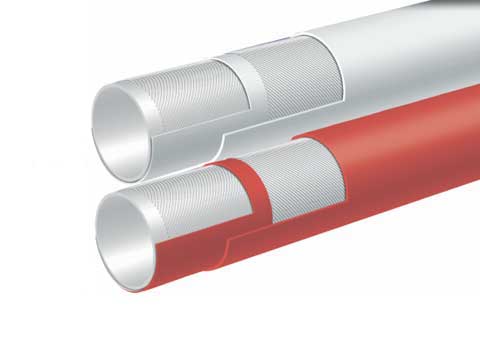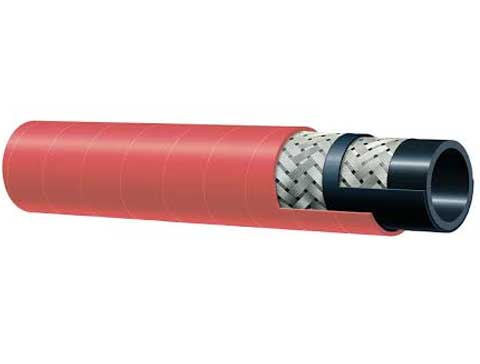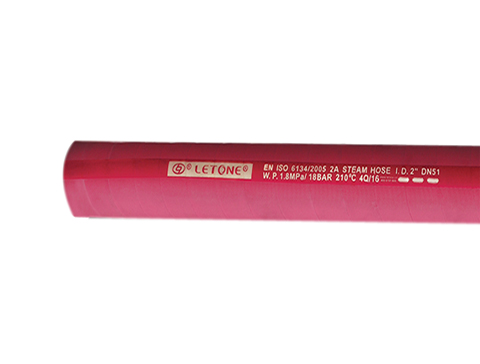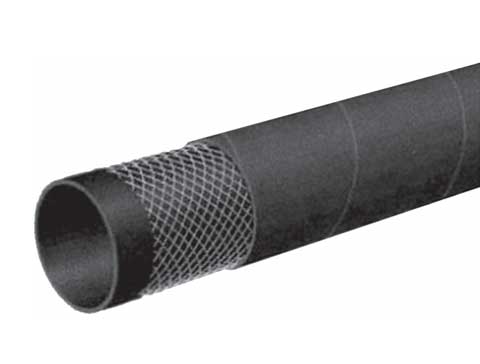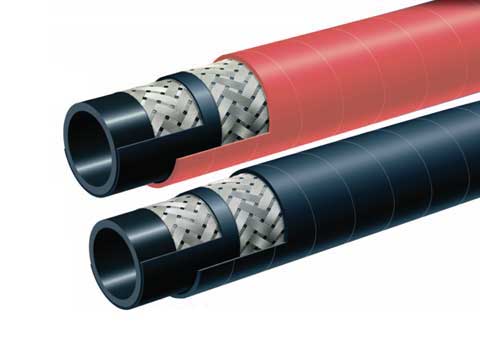UPE (Ultra-High Molecular Weight Polyethylene) industrial hoses are widely used in various industries for the transportation of chemicals, solvents, and other fluids. The lifespan of UPE hoses is a critical factor in determining their value and overall effectiveness in industrial applications. Several factors can affect the lifespan of UPE industrial hoses, including material quality, operating conditions, and maintenance practices. This article explores these factors in detail, providing insights on how to maximize the lifespan of UPE hoses and ensure their long-term performance.
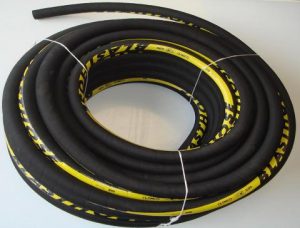 I. Material Quality and Selection
1.1 Material Purity and Composition
The quality of the UPE material used in the construction of industrial hoses plays a vital role in determining their lifespan. Higher purity UPE materials, with minimal impurities and additives, offer improved chemical resistance and longer service life. It is essential to source UPE hoses from reputable manufacturers who adhere to strict quality control standards and provide certifications for the material's purity and composition. Choosing hoses made from high-quality UPE materials ensures better resistance to chemical degradation and longer service life.
1.2 Reinforcement Layers
The presence of reinforcement layers in UPE hoses significantly impacts their durability and lifespan. Reinforcement layers, typically made of textile fibers, steel wire, or synthetic materials like aramid, enhance the hose's structural integrity and resistance to pressure. The number and type of reinforcement layers should be carefully considered, depending on the intended application and the maximum pressure requirements. Insufficient or improper reinforcement can lead to premature hose failure, while excessive reinforcement can increase stiffness and reduce flexibility, causing mechanical fatigue over time.
II. Operating Conditions and Environmental Factors
2.1 Chemical Compatibility
One of the most crucial factors affecting the lifespan of UPE hoses is the compatibility between the hose material and the fluids being transported. UPE hoses are known for their exceptional chemical resistance. However, prolonged exposure to aggressive chemicals or incompatible fluids can still lead to material degradation and reduced lifespan. It is crucial to assess the chemical compatibility of the UPE hose with the specific fluids it will come into contact with. Consult chemical compatibility charts provided by the manufacturer and select hoses that are suitable for the chemicals and concentrations present in the application.
2.2 Temperature Extremes
Extreme temperatures can significantly impact the lifespan of UPE hoses. Exposure to high temperatures can cause the UPE material to soften, leading to deformation, reduced mechanical strength, and increased susceptibility to chemical attack. On the other hand, prolonged exposure to low temperatures can cause the hose material to become brittle, resulting in cracking or rupturing. It is important to select UPE hoses designed to withstand the temperature range of the application. Consider factors such as the maximum and minimum operating temperatures, insulation requirements, and the need for heat tracing or cooling systems to maintain the hose within the optimal temperature range.
2.3 Abrasion and External Damage
External factors such as abrasion, impact, and physical damage can significantly reduce the lifespan of UPE hoses. In industrial environments with rough surfaces, sharp edges, or heavy machinery, hoses can be exposed to abrasive forces that gradually wear down the hose material. It is crucial to assess the application and implement measures to minimize abrasion and external damage. This can include using hose protection, such as sleeves or guards, installing hose supports or clamps to prevent excessive flexing or kinking, and routing hoses away from potential contact with abrasive surfaces or moving machinery.
III. Maintenance and Inspection Practices
3.1 Regular Inspections
Regular inspections are essential to identify potential issues with UPE hoses before they escalate into significant problems. Inspect hoses visually for signs of wear, cracks, bulges, leaks, or any other damage. Pay special attention to areas where the hoses connect to fittings or couplings, as these are common points of failure. Implement a scheduled inspection program and replace any hoses that show signs of deterioration or damage promptly. Regular inspections help identify and address potential issues early, extending the lifespan of UPE hoses and minimizing the risk of unexpected failures.
3.2 Proper Cleaning and Maintenance
Proper cleaning and maintenance practices are essential for maximizing the lifespan of UPE hoses. After use, thoroughly clean the hoses to remove any residue or chemicals that may cause degradation over time. Follow the manufacturer's recommendations for cleaning procedures and use compatible cleaning agents. Additionally, ensure that hose connections, fittings, and clamps are tightened properly and regularly check for any signs of leakage. Lubricate moving parts, such as swivel connections, to prevent binding or excessive wear.
3.3 Storage and Handling
Improper storage and handling can also impact the lifespan of UPE hoses. Hoses should be stored in a clean, dry, and well-ventilated area away from direct sunlight, heat sources, and chemicals. Avoid coiling or bending the hoses excessively, as this can cause kinking or deformation. Additionally, ensure that the hoses are stored away from sharp objects or rough surfaces that can potentially puncture or abrade the hose material. Proper storage and handling practices help maintain the structural integrity and performance of UPE hoses, extending their lifespan.
Conclusion:
The lifespan of UPE industrial hoses is influenced by various factors, including material quality, operating conditions, and maintenance practices. Choosing hoses made from high-quality UPE materials and proper reinforcement enhances their durability. Considering factors such as chemical compatibility, temperature extremes, and preventing abrasion and external damage helps ensure optimal performance and longevity. Implementing regular inspections, proper cleaning, and maintenance practices, along with appropriate storage and handling, further extends the lifespan of UPE hoses. By addressing these factors, industrial operators can maximize the value and effectiveness of UPE industrial hoses in their applications.
I. Material Quality and Selection
1.1 Material Purity and Composition
The quality of the UPE material used in the construction of industrial hoses plays a vital role in determining their lifespan. Higher purity UPE materials, with minimal impurities and additives, offer improved chemical resistance and longer service life. It is essential to source UPE hoses from reputable manufacturers who adhere to strict quality control standards and provide certifications for the material's purity and composition. Choosing hoses made from high-quality UPE materials ensures better resistance to chemical degradation and longer service life.
1.2 Reinforcement Layers
The presence of reinforcement layers in UPE hoses significantly impacts their durability and lifespan. Reinforcement layers, typically made of textile fibers, steel wire, or synthetic materials like aramid, enhance the hose's structural integrity and resistance to pressure. The number and type of reinforcement layers should be carefully considered, depending on the intended application and the maximum pressure requirements. Insufficient or improper reinforcement can lead to premature hose failure, while excessive reinforcement can increase stiffness and reduce flexibility, causing mechanical fatigue over time.
II. Operating Conditions and Environmental Factors
2.1 Chemical Compatibility
One of the most crucial factors affecting the lifespan of UPE hoses is the compatibility between the hose material and the fluids being transported. UPE hoses are known for their exceptional chemical resistance. However, prolonged exposure to aggressive chemicals or incompatible fluids can still lead to material degradation and reduced lifespan. It is crucial to assess the chemical compatibility of the UPE hose with the specific fluids it will come into contact with. Consult chemical compatibility charts provided by the manufacturer and select hoses that are suitable for the chemicals and concentrations present in the application.
2.2 Temperature Extremes
Extreme temperatures can significantly impact the lifespan of UPE hoses. Exposure to high temperatures can cause the UPE material to soften, leading to deformation, reduced mechanical strength, and increased susceptibility to chemical attack. On the other hand, prolonged exposure to low temperatures can cause the hose material to become brittle, resulting in cracking or rupturing. It is important to select UPE hoses designed to withstand the temperature range of the application. Consider factors such as the maximum and minimum operating temperatures, insulation requirements, and the need for heat tracing or cooling systems to maintain the hose within the optimal temperature range.
2.3 Abrasion and External Damage
External factors such as abrasion, impact, and physical damage can significantly reduce the lifespan of UPE hoses. In industrial environments with rough surfaces, sharp edges, or heavy machinery, hoses can be exposed to abrasive forces that gradually wear down the hose material. It is crucial to assess the application and implement measures to minimize abrasion and external damage. This can include using hose protection, such as sleeves or guards, installing hose supports or clamps to prevent excessive flexing or kinking, and routing hoses away from potential contact with abrasive surfaces or moving machinery.
III. Maintenance and Inspection Practices
3.1 Regular Inspections
Regular inspections are essential to identify potential issues with UPE hoses before they escalate into significant problems. Inspect hoses visually for signs of wear, cracks, bulges, leaks, or any other damage. Pay special attention to areas where the hoses connect to fittings or couplings, as these are common points of failure. Implement a scheduled inspection program and replace any hoses that show signs of deterioration or damage promptly. Regular inspections help identify and address potential issues early, extending the lifespan of UPE hoses and minimizing the risk of unexpected failures.
3.2 Proper Cleaning and Maintenance
Proper cleaning and maintenance practices are essential for maximizing the lifespan of UPE hoses. After use, thoroughly clean the hoses to remove any residue or chemicals that may cause degradation over time. Follow the manufacturer's recommendations for cleaning procedures and use compatible cleaning agents. Additionally, ensure that hose connections, fittings, and clamps are tightened properly and regularly check for any signs of leakage. Lubricate moving parts, such as swivel connections, to prevent binding or excessive wear.
3.3 Storage and Handling
Improper storage and handling can also impact the lifespan of UPE hoses. Hoses should be stored in a clean, dry, and well-ventilated area away from direct sunlight, heat sources, and chemicals. Avoid coiling or bending the hoses excessively, as this can cause kinking or deformation. Additionally, ensure that the hoses are stored away from sharp objects or rough surfaces that can potentially puncture or abrade the hose material. Proper storage and handling practices help maintain the structural integrity and performance of UPE hoses, extending their lifespan.
Conclusion:
The lifespan of UPE industrial hoses is influenced by various factors, including material quality, operating conditions, and maintenance practices. Choosing hoses made from high-quality UPE materials and proper reinforcement enhances their durability. Considering factors such as chemical compatibility, temperature extremes, and preventing abrasion and external damage helps ensure optimal performance and longevity. Implementing regular inspections, proper cleaning, and maintenance practices, along with appropriate storage and handling, further extends the lifespan of UPE hoses. By addressing these factors, industrial operators can maximize the value and effectiveness of UPE industrial hoses in their applications.

